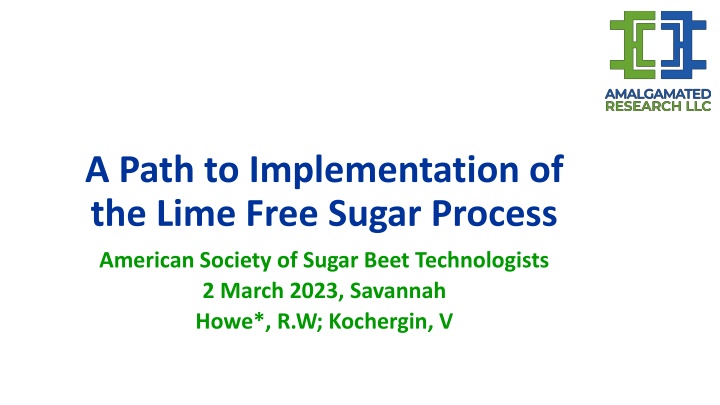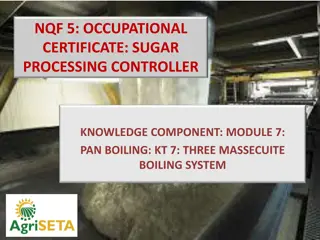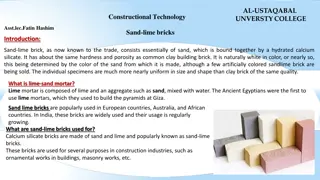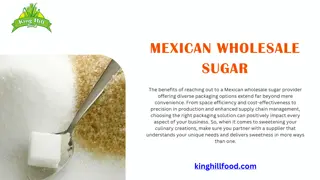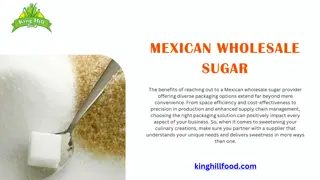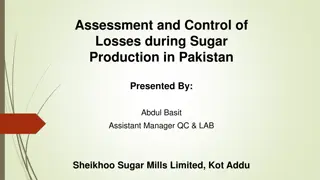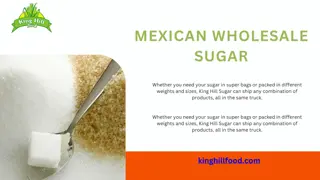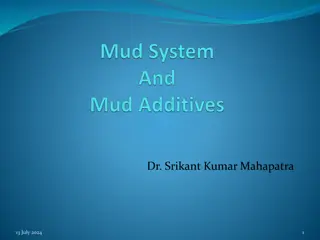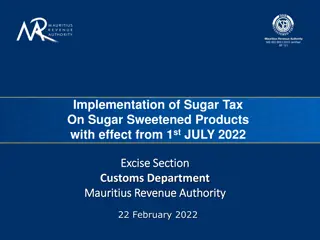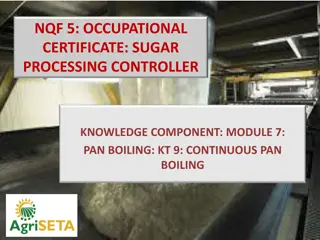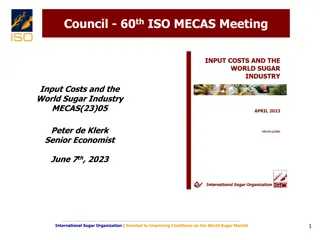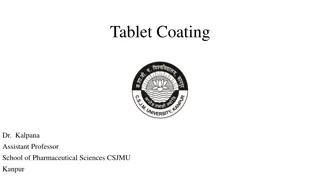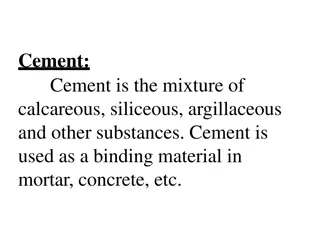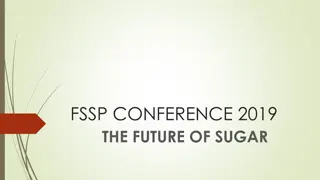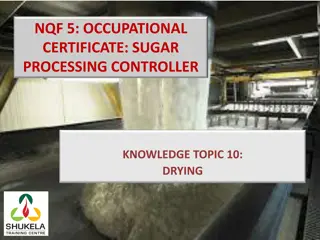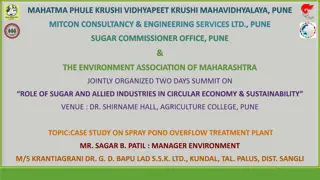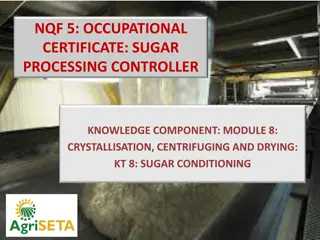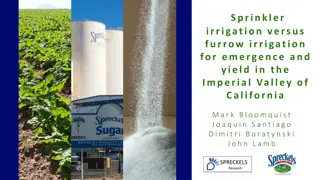Advancing the Sugar Beet Industry: Lime-Free Process Implementation
The Lime-Free Process offers a sustainable solution for the beet sugar industry, eliminating traditional steps and increasing efficiency. Benefits include reduced environmental impact, improved operational consistency, and the ability to process deteriorated beets. Challenges lie in industry reluctance to change, but strategic approaches can pave the way for successful adoption.
Download Presentation

Please find below an Image/Link to download the presentation.
The content on the website is provided AS IS for your information and personal use only. It may not be sold, licensed, or shared on other websites without obtaining consent from the author.If you encounter any issues during the download, it is possible that the publisher has removed the file from their server.
You are allowed to download the files provided on this website for personal or commercial use, subject to the condition that they are used lawfully. All files are the property of their respective owners.
The content on the website is provided AS IS for your information and personal use only. It may not be sold, licensed, or shared on other websites without obtaining consent from the author.
E N D
Presentation Transcript
A Path to Implementation of the Lime Free Sugar Process American Society of Sugar Beet Technologists 2 March 2023, Savannah Howe*, R.W; Kochergin, V
Looking to the Future How does the beet sugar industry remain competitive and ultimately survive? What are the challenges and what development is required? Consideration must be given to 1. Yield improvement Both field and factory (extraction) 2. Reduced carbon footprint Type and cost of energy Fossil Free Sugar Production Lower energy use ? 3. Reduced environmental impact Low emissions (CO2, NOx, Odour) Lime kiln operations Cost and availability of limestone, use of solid fuel, co-product or disposal 4. Utilisation of capital investment Longer operating periods Consolidation of factories, fewer bigger factories 5. Low cost manufacturing Operational consistency - Process Automation Workforce size, maintenance costs, higher volumes, hires, process chemical usage etc. North American 5 Yr Average Thick Juice Purity 93.00 92.50 92.00 91.50 91.00 90.50 90.00 04/05 06/07 08/09 10/11 12/13 14/15 16/17 18/19 20/21 No new factories are being built and reconfiguring old factories can be difficult and costly Innovative, forward thinking solutions will be needed The lime free purification process will address many of these challenges and become an attractive opportunity
Lime Free Process Beet Diffusion Animal Feed Drying Co-Product Treatment Pre-Treatment & Membrane Filtration Raw Juice Softening Evaporation Conc. RJ Storage Chromatography 99+ Purity Extract Evaporation Evaporation Evaporation Crystallization Betaine Raffinate (CSB) Molasses(45-50 Purity) White Sugar
Benefits of the Lime Free Process Complete elimination of liming and carbonatation steps and associated problems 88-90% Non-sugar elimination compared with 25% for conventional purification Factory extraction projected at 96% (on sugar) A more consistent and reliable operation Solid waste is reduced by a factor of seven to eight Microfiltered concentrated raw juice stores better than thick juice Chromatography can be used for both concentrated raw juice or molasses Three white product boiling s and reduction of SE recycle and steam demand Ability to process deteriorated beet
Factors for Consideration The industry is slow to change and risk adverse Very unlikely for a complete factory reconfiguration in a single step Likely to need a combination of factors A strategic intent to eliminate lime purification Evidence that quarrying, transporting and burning limestone plus the management of the precipitated calcium carbonate are not sustainable Increasing cost of liming operations Carbon taxation, limestone, fuel costs, maintenance, environmental permitting etc. Possibly a preclusion on the burning of fossil fuels An ability to re-use or expand associated equipment Therefore, decisions need to be taken that don t preclude future possibilities and take a business in the right direction of travel Adoption of juice softening and chromatography become pre-requisite Juice softening projects can be stand alone projects with attractive Returns on Investment (ROI)
Current Status 8 years of industrial research and pilot work completed Raw Juice preparation for chromatography confirmed This included pre-treatment and crossflow membrane filtration Issues of membrane wear, fouling, temperature, cleaning and life resolved A suitable membrane identified and extensively trialled (~9000 hrs) Pilot scale studies done on the pre-treatment co-product streams Raw juice chromatography carried out at pilot scale Use of fractal technology provides easy scalability Raw juice purity now 2+ purity points higher Similar improvement in extract purity is predicted Over the last 30 years there have been continued improvements in ARi chromatography systems Non sugar loading is increasing Chromatography systems are getting smaller Water use reduction Smaller resin size and improved kinetics However, it remains that a lime free beet sugar process is yet to be built and operated
Path to Implementation Crystallisation Filtration Slicing & Diffusion Lime Evaporation Purification Filtration Juice Softening Slicing & Diffusion Lime Evaporation Crystallisation Purification Filtration Juice Softening Slicing & Diffusion Lime Evaporation Crystallisation Molasses Chromatography Purification
Steps Left to Build Confidence Scalable Industrial pilot trials using slip stream Side stream to existing sugar process Producing enough material to validate 1. Filtration of mud and retentate 2. Permeate softening 3. Larger scale juice storage 4. Chromatography (scalable trials) Such an industrial pilot trial may be a joint effort of several interested parties
Stepwise Implementation Evaporation Beet Cleaning Crystallisation Softening Filtration Slicing & Diffusion Lime Purification Molasses Chromatography Evaporation Raw Juice Storage Juice Softening Membrane Filtration Raw Juice Pre-treatment Step 1 Prepare and store concentrated Raw Juice Step 2 Run concentrated Raw Juice through chromatography and validate sugar end operation Step 3 Full process integration
Summary Change is happening and doing nothing may be non-optional A strategic approach will be required to meet the future challenges Raw juice chromatography is a viable alternative for juice purification It remains the only researched and developed option A step wise implementation path would mitigate risk Industry collaboration may reduce risk further Acceptance of unit processes such as juice softening and molasses chromatography is required Both may offer stand alone ROI for current manufacturing operations Provides a pathway for a future lime free operation Process economics requires evaluation on a case by case basis
